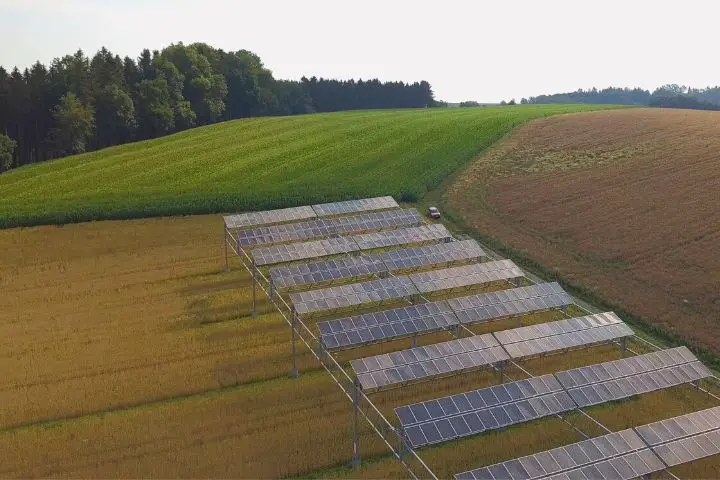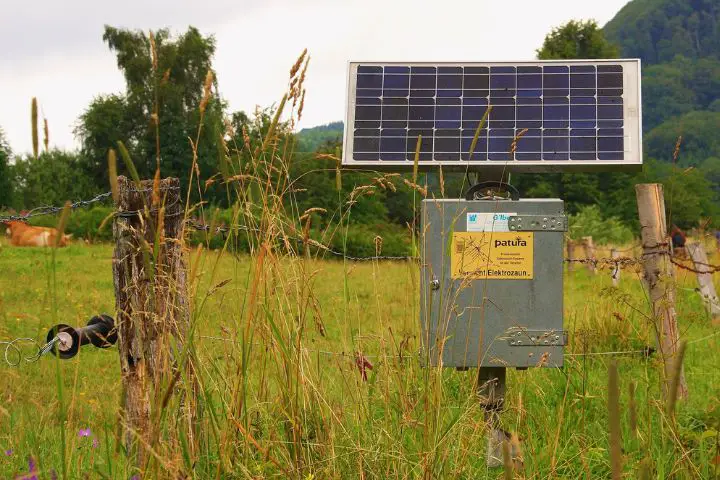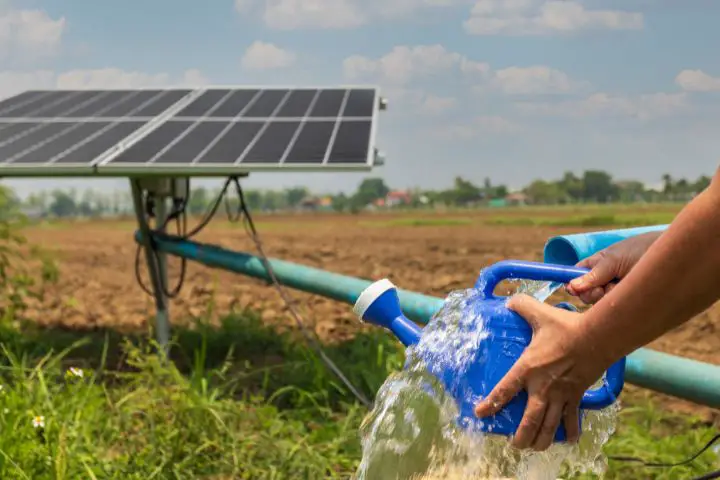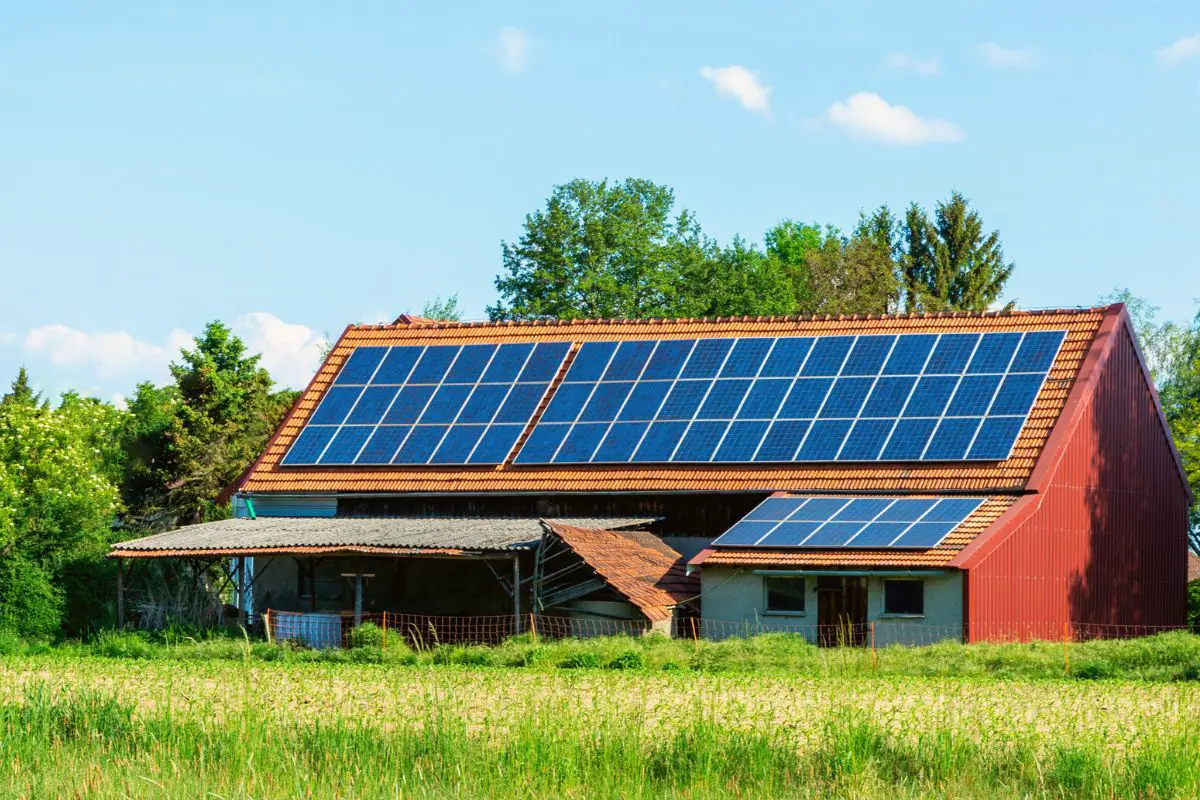5 Ways to Use Solar Power in Agriculture [+ Real-World Examples]
Have you ever thought about how amazing it would be if we could power our farms off the energy of the sun? Wouldn’t that be an awesome combination of nature and technology, helping us reduce carbon emissions while also increasing farming productivity? Maybe it could really give us a shot at saying goodbye to climate change!
So I’m going to take you on an exciting journey into all the ways you can use solar energy in agriculture. And you don’t have to wait for 10 years — all of these methods and technologies are already well under way!
My pledge to you: After this revelatory journey, not only will you be well-versed in agrivoltaics and other solar agricultural techniques but also your mind will overflow with tactics for making the most out of your farming activities — regardless if you’re a seasoned farmer or just an amateur kitchen gardener.
Agrivoltaics: The Heart & Soul of Solar Agriculture
Let us kick off by exploring the core element in solar agriculture – agrivoltaics.
Agrivoltaic farming is an ingenious idea combining agriculture and solar energy, so you literally cultivate crops or have your cattle graze right under your own solar panels.
It’s not just a case of catching some rays — it allows us to make use of them twice. We get sunshine that nourishes photosynthesis in our plants while also tapping into its power for electricity. Like killing two birds with one stone, but in a sustainable way! Figuratively speaking, of course.
The solar panels are raised high enough for sunlight beams to filter down onto our growing crops beneath while simultaneously collecting solar energy which then gets converted into electrical current. Couldn’t be better!
This cutting-edge configuration optimizes the use of land and resources, which is a dream come true for any sustainability admirer.

And it’s not only about energy and crop production. There are even more advantages:
- The shade created by the panels helps minimize water evaporation, preserving that precious H2O. Plus, studies show that the cooler microclimate beneath the panels assists particular crops to flourish.
- Apart from harvesting crops as a farmer, you’re creating your own sustainable energy or perhaps making extra money by trading surplus power back to the grid. (That’s one great eco-friendly side gig if you ask me!)
- By producing renewable energy and saving water, they greatly reduce agriculture’s carbon footprint.
- Not only are you creating sustainable electricity and increasing crop yields when using this system –you’re also providing new habitats for a variety of species to maintain biodiversity!
If that isn’t impressive enough, France’s National Institute for Agricultural Research discovered something even more amazing: growing grapes beneath solar panels not only reduced water usage by 65%, it increased their ripeness & sugar content too!
That’s how powerful agrivoltaic farming is.
As professor Greg Barron-Gafford from the University of Arizona puts it, “The age-old question arises: food or energy production? This conundrum cuts right to the core of understanding human-environment connections. So why not do both in one place?”.
Well, that’s exactly what they did! They began growing crops like tomatoes, peppers, chard, kale and herbs all under solar panels. An awesome example of sustainable agriculture!
Using a combination of science and practicality, Professor Gafford was able to make use of available resources around him by utilizing solar power for irrigation systems on his farms. Doing this has had incredible results in water conservation as well as crop yields being increased due to maximized efficiency from these combined technologies.
Moreover, it pays off rather handsomely when you start getting creative with your farming techniques. Especially when those efforts are made towards sustainability goals which will also benefit generations down the line.
According to Gafford, it’s proof positive that taking risks can have profound effects if done correctly.

1. Solar-Powered Irrigation Systems: Water Your Crops Sustainably
Traditional irrigation methods often use a lot of energy and are tough on the environment. That’s why many people have opted for solar-powered irrigation systems, which provide an alternative, sustainable approach. But how exactly does this work?
To put it simply, photovoltaic (PV) panels transform sunlight into electricity – which is then used by pumps (typically submersible ones placed in wells or surface pumps depending on water sources). This allows them to push water from the source onto fields for agricultural purposes.
For example, Dave from Wilderstead uses his solar system to power up the pumps located inside his greenhouse-raised beds! The awesome thing about solar-irrigation systems is that they’re frequently combined with storage tanks to ensure water supply even when there’s low sunlight.
With the technical side of things sorted, let’s get into all the amazing advantages these bring us:
- Energy efficient and cost-friendly: You can kiss goodbye those exorbitant electricity bills and fuel costs since you’ll be using sunshine for power. Not only that but operating expenses are kept at a minimum.
- Sustainable and eco-friendly: By utilizing solar energy these irrigation systems lessen our need for fossil fuels, making them an environmentally conscious selection which is also sustainable.
- Water-saving: Quite a few solar irrigation systems are able to team up with efficient watering tactics like drip and sprinkler techniques, leading to considerable water conservation.
- Handy & sizeable: Solar-powered irrigations aren’t only for enormous farms. They’re equally suitable for small gardens or large acreages, rendering them an achievable alternative in all types of agrarian setups.
- Going off the grid: These units function off the grid, making these kinds of systems perfect solutions for isolated regions where access to power is deficient.
Real-World Examples of Solar Irrigation Systems
Ok! Our focus is now shifting from theoretical scenarios to taking a peek at some actual implementations out there in real life.
For example, in India – a country that heavily relies on farming- farmers are progressively turning to solar-powered irrigation systems. The government started programs such as the PM KUSUM scheme to promote the use of sun energy for agricultural purposes.
In Africa also, solar-powered watering is catching on. Futurepump, a company in Kenya, provides solar pumps to small-scale farmers which facilitates them to irrigate their lands more efficiently and sustainably. Solar irrigation has reached far corners of our planet thus making sure crops get the necessary access to life-giving water they require.
This goes to show that renewable energies like solar have immense potential when it comes to providing clean sources of power and helping people shift away from conventional methods easily.
2. Solar-Powered Greenhouses: Nature’s Blessing Supercharged!
Imagine combining Mother Nature’s green power with our cutting-edge technology for a perfect eco-friendly solution. That’s a solar greenhouse in a nutshell – utilizing the sun to provide energy not just for plants, but also for running every aspect within it such as heating and cooling, hydration systems or artificial lighting.
The advantages of this are evidently numerous – so let’s count them out:
- Energy efficiency: Utilizing solar power in a greenhouse allows you to use green energy, dramatically decreasing your electricity costs and becoming less reliant on the public electric grid.
- Climate regulation: The energy produced by the sun is used to manage the temperature inside the hothouse, ensuring ideal growing conditions for all of your precious plants.
- Year-round cultivation chance: Moreover, this type of powered greenhouses makes it possible for cultivating crops throughout the year no matter what outside weather brings (time to start growing off-season veggies and maximizing yield).
- Water preservation: Additionally due maintained environment within such installation not much water vaporizes resulting in water conservation.
If you’re interested in bringing your farming to the next level, head over to our in-depth guide to solar greenhouses!
Real World Examples of Solar-Powered Greenhouses
For greenhouses in more remote areas, solar power offers a reliable energy source without the limitations that come with grid electricity. Let’s take a look at how it works by looking at some practical examples.
Ceres Greenhouse Solutions in Colorado designs and builds this kind of eco-friendly greenhouses to generate solar power. But they also employ ideas for reducing their overall energy use – an impressive example!
It isn’t only America embracing this technology though. China has been utilizing solar-powered greenhouses too, especially up north where there is plenty of sunshine.
My top pick is definitely the DIY solar greenhouse!
These structures have a distinct semi-circular shape, and their walls are designed to hold on to heat during the day while releasing it at night – creating just the right temperature for plants. Cool, huh?

3. Solar Energy in Livestock Watering Systems
Animals need water too – as much or even more than crops do! But getting that H2O out there can be quite energy intensive especially if they’re grazing somewhere remote. Fortunately, with solar-powered livestock watering systems, this issue’s about to get solved very soon!
Here’s how they work.
Just like the irrigation systems we discussed above, these watering systems use solar panels to power a pump. The pump pulls water from wells, springs or other sources of H2O and pumps it into troughs for animals. Some setups even add storage tanks that keep supplying water regardless of whether the sun is out or not.
If you want to take your farm sustainability up a notch further, couple your solar-powered animal waterers with setting up a solar farm! That’d be an easy way towards truly sustainable agrivoltaic farming.
The benefits of using sun-powered watering systems are plentiful:
- Reliability: Solar-powered systems can give livestock a reliable water source, particularly in outlying or non-connected areas.
- Eco-friendly: By taking advantage of renewable energy sources these setups greatly cut down on the environmental effects that come with conventional animal drinking methods.
- Cost-effective: Even though installation may cost initially there are low operational costs associated with solar power watered systems which will make you save lots and lots of money over time.
- Better pasture management: Having a consistent water source makes it possible to rotate grazing, which boosts the health and evenness of your pastures – an advantageous situation for both you and your furry friends.
- Adaptability: These systems can be adjusted in size to fit various herd sizes as well as locations, making them ideal for several farming requirements.
Solar Watering Systems Success Stories
When it comes to reaping the advantages solar-powered livestock watering systems offer; we have some great examples from around the world – particularly where drought is common. Down Under in Australia, these kinds of eco-friendly solutions are becoming increasingly popular.

The company Think Water provides tailored solar watering solutions to meet the varied needs of livestock farmers in Australia.
Closer to home, the USA-initiated ‘Solar-Powered Livestock Watering Project‘ was designed for ranchers to help them provide an unobtrusive water supply with lesser environmental impact.
4. Solar Electric Fences: Protectors of Farmlands
A solar electric fence setup is pretty basic. Solar panels take sunlight and convert it to electricity, which charges the battery pack. This energy powers an energizer that sends out a short electric pulse along the fencing line. The mild shock keeps critters away from crossing over to your land, so no worries about lost livestock or damaged crops.
But what are some of its advantages?
They’re as bright and cheery as their energy source:
- Dependable and trustworthy: Solar fences provide dependable, 24/7 protection for your farmlands even during power outage or in secluded areas.
- Economical: After you’ve paid the initial setup cost, you won’t have to worry about further expenditure since this system runs on Sun’s power.
- Environmentally friendly: By relying exclusively on renewable solar energy these barriers radically lessen carbon emissions produced by regular electric fencing systems.
- Quick and easy installation plus maintenance: Generally speaking it takes no expert knowledge whatsoever to either set up a solar fence system from scratch or keep it running – just minimal technical skills are required!
Note, however, that you shouldn’t mistake these protective fences for regular solar panel fences whose sole purpose is to generate electricity without taking up roof space.
Practical Use Cases of Solar Fences
Let’s illuminate these points with some real-world applications.
In countries like India, solar fences are frequently used to deter wild animals from entering farmlands, thus reducing human-animal conflicts.
Similarly, in Africa, the Mara Elephant Project uses solar-powered electric fences to protect farms from elephants, helping to conserve wildlife while safeguarding local agriculture.

Pitfalls and Disadvantages of Solar Energy in Agriculture
Using sunlight in agricultural activities isn’t only beneficial for reducing post-harvest losses but also helps maintain farm produce quality while enhancing farmers’ potential income opportunities. (It sounds really great on paper! But are there any downsides?)
So here are several issues we need to consider before going all renewable.
1. Initial Investment
Launching a solar system, whether it’s for a greenhouse, an animal watering facility or even a refrigeration unit can cost you heavily. The charges of the panels, batteries and auxiliary hardware used could put anyone off taking such financial decisions.
Take it from Dr David Zilberman from UC Berkeley: “Of course, the initial outlay might be intimidating to many farm owners but if they take into account their future savings plus environmental bonuses then investing in this technology is great.”
2. Geographic and Weather Limitations
Solar power is often unreliable in areas that have frequent cloudy days or low sunlight. Plus, rough weather conditions can really damage the panels, which means you might need to put down some money for repairs (Hail sure does love causing problems!).
3. Technical Knowledge & Assistance Needed
Setting up and maintaining a solar system requires technical expertise. Sure there are simpler options out there but if you don’t have access to local support it can be quite tough… especially when you live far away from civilization!

4. Your Farm May Not Be Big Enough
Solar panels take up room – something that may not be plentiful on many farms. For example, constructing an agrivoltaic system or a solar-powered irrigation system requires thorough planning to make sure the land is being used efficiently.
5. Not 100% Green
Despite solar power typically having positive environmental impacts, there is still some environmental burden attributed to the production of photovoltaics. The culprit? Mainly raw materials mining and solar panel waste when they reach the end-of-life stage.
Despite all these hurdles, most experts agree that it’s worth it because the benefits of incorporating solar energy into agricultural activities outweigh any cons.
“Affordable financing options, dependable technical support and convenient recycling programs are all vital if we’re going to make the most of solar energy for agrivoltaic farming.” That’s according to Jennifer McIntosh, an environmental scientist from the Intergovernmental Panel on Climate Change (IPCC).
Making Our Future Bright & Green
Agrivoltaic farming is about far more than just taking a responsible approach towards protecting our planet – it also demonstrates how creative humans can be when we are compelled to undo the damage that we’ve done.
From sun-powered irrigation systems to photovoltaics that produce power while growing crops simultaneously; there’s so much potential out there! Sure, challenges remain but this innovative way of producing food could bring us some serious benefits – including reduced expenses and better eco-efficiency.
So what are you waiting for? It’s time to join forces with Mother Nature as she brings forth her own radiant revolution down here on Earth!






